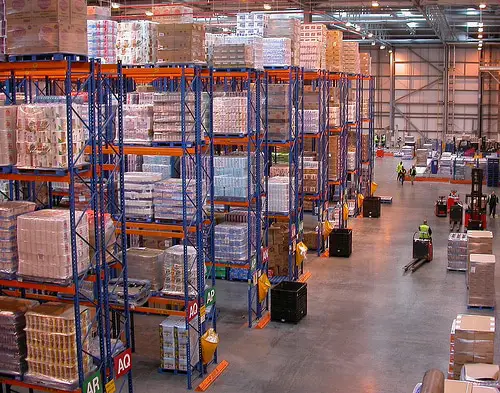No one football player gets the ball to the goal all on their own, not with an opposing team out in full force to stop them.
Your forward might be very quick and very talented, but they still need the striker to distract the opposition, midfielders to help them get the ball through the defenders, wingers to guard the side and, of course, a strong defense on their own side to make sure the game doesn’t turn against them. If the whole team doesn’t work in harmony, the opposing team will quickly spot the weak points and block them.
The same idea applies to supply chain management. Each movement—every step, vendor, and party along the way—must be perfectly aligned and in sync with the next. It’s only through synchronization of your supply chain we can deliver efficient, cost-effective order fulfillment to the end-customer.
Requirements for A Synchronized Supply Chain
Just like the many elements that must come together in order to make that goal, all supply chain components must come together in harmony—in the right amounts, at the right time—to meet your business goals. And if you have this synchronized supply chain in place, the benefits are enormous.
This means suppliers need to pre-plan their production with realistic and data-driven lead times in mind. Logistic providers need to know intimately what shipping services are required and how quickly those can be delivered. Buyers need to foresee the entire product lifecycle in order to accurately pinpoint purchasing needs in real time.
In short, they need to work with the rest of the supply chain in mind.
It’s about being proactive, understanding what the next step (or steps) are in the process and minimizing potential risks long before they ever come to fruition. This requires:
Down-the-line visibility
Everyone in the supply chain needs visibility into the product lifecycle in real time. Create an end-to-end central system that gives participants real-time updates on the supply chain process—when are supplies coming down the line? What lead times and buffers are in place? When are they expected to step in and do their part? Give parties the big picture, and allow them to see how their unique role contributes to the entire process.
Trustworthy data
Current, accurate data is crucial to working together cohesively—particularly when parties are spread across the country or globe. Clearly define where your data is coming from, how you will capture it and how every participant will access it. You want everyone working off the same information at the same time.
Collaboration and engagement
All supply chain participants need to be actively engaged in the process. They must be committed to the success of the overall chain—not just their portion of it—and they need to be willing to work through the kinks to make it happen. If you have dozens of suppliers, start with the most profitable ones and onboard them first. Sometimes facilitating good collaboration can take time.
Real-time updates
Is weather about to impact shipping times in one state? Are there delays on the buyer end? Make sure your system updates every participant on these deviations as they happen. They need as much time as possible to react—and for other parties down the line to do so, too.
Assessment
At least once a year, go back and evaluate your supply chain synchronization efforts. Are they working? Have you cut down on errors? Improved efficiencies? Decreased costs? Track your metrics, and analyze how your new system has served you. Be prepared to make a few changes as needed.
Take Your Time
Just like the supply chain itself, syncing up supply chain parties takes time, and it’s usually best done incrementally, in steps. Start rolling out your efforts with the least resistive parts of your chain. As one step gets more in sync, it creates a snowball effect, and soon enough, the entire process will be leaner, more efficient and more effective on the whole.
Stephanie Johnson is the Head of Marketing & Growth at Gravity Supply Chain, a cloud-based software platform that offers logistics providers real time visibility across their supply chain.







